
Swallow
Swallow
Swallow
As the cold winter begins to come to an end and the season shifts to spring, what are the birds you can see in Japan?Yes, swallows! When you see swallows starting to build nests or busily flying in the sky, you can feel the change of seasons. Why can such swallows be seen only from spring to summer in Japan? Wondering where the hell is going in the fall and winter?Let's explore the wonders of swallows together! The swallow covered in this article is the "barn swallow" commonly seen in Japan. Please note that unless otherwise stated, this barn swallow refers to this barn swallow. We will also introduce the contents based on the characteristics and ecology of your stay in Japan.
Swallow Basic Infomation
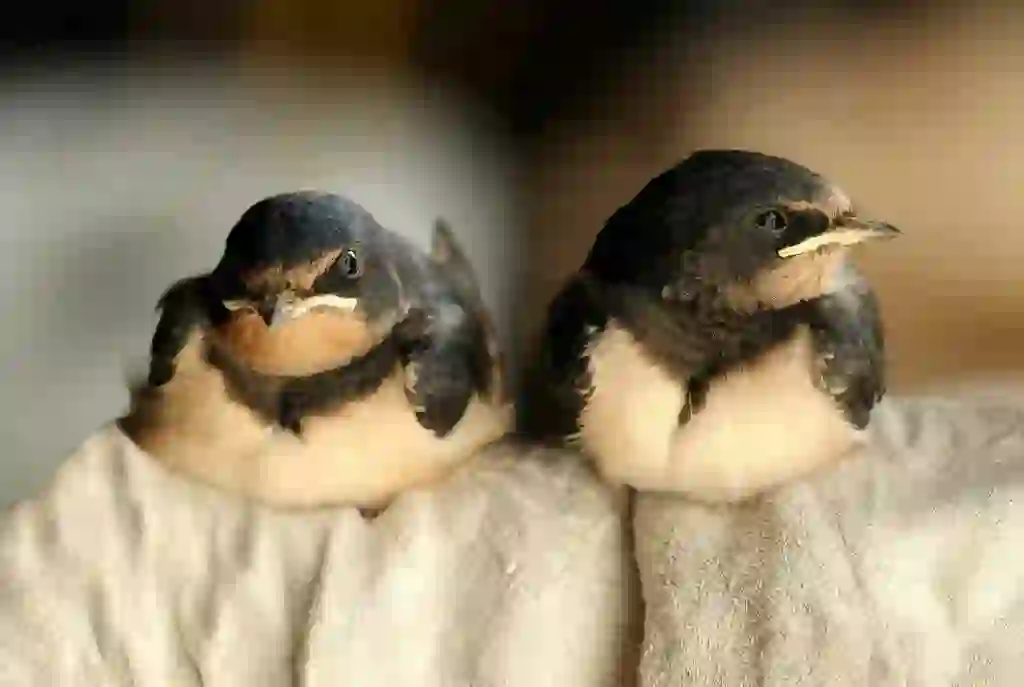
Aves-Passeriformes-Hirundinidae-Swallow genus.
Length:approx 17cm weight:approx 18.6g.
Swallows mainly inhabit the northern hemisphere. Swallows, called “migratory birds,” come to Japan in the spring, but spend the winter in India and Southeast Asia from autumn to winter. This is called “overwintering.”
The back side is blackish with a dark luster of blue, and the forehead and throat are red. The belly side is white, and it is also characteristic that the outer side of the tail feathers is long. The beak and legs are also blackish in color.
Swallows are famous for making nests under the roof. These nests are mainly made of mud and straw mixed with saliva. The material that contains a little moisture and is like clay is particularly suitable for swallow nest building.
Originally, why did swallows use mud to build their nests? In ancient times, the ancestors of swallows lived by digging holes in the cliffs of the earth instead of cup-shaped nests like today.
It is believed that this remnant has been passed down to today’s swallows, and instead of digging holes in the cliffs of the earth, they stick mud or straw to walls to build nests.
It may be difficult to distinguish between male and female swallows because they look very similar. However, when you compare males and females side by side, males have longer tail feathers than females, and the red parts are more pronounced in males.
The breeding season for swallows is from around April to July. They start laying one egg per day and lay a total of 5-6 eggs. After about two weeks of incubation, the chicks hatch.
Swallows are said to live for about 12 years, but in reality, they often live shorter lives. Migratory swallows are often attacked by predators or injured during their travels. Therefore, they can live for more than 10 years only if they do not get injured or sick. Some swallows have lived up to 16 years.
Swallow Q&A

Where does the swallow get its name?
In English, it is called "swallow", but in fact, in the case of the Japanese name, it is named "tsubame". Why did it come to be called tsubame by its Japanese name this time? Introducing its origin.。
There are various theories about the origin of the name. In the past, swallows were called “tsutibami,” then “tsutibame,” and finally “tsubame.”
In the past, “tsuba” referred to glossiness, “kura” referred to blackness, and “me” referred to birds. Some people say that people who saw the appearance of swallows combined these words to create the name “tsubakurame,” which later changed to “tsubame.”
※In the old Japanese, the gloss was called "tsuba", black was called "kuro", and birds were called "tori".
There is also a theory that the name “tsubame” came from the name “tsubakura,” which was given because it built nests under a storehouse. Another theory is that it was originally called “tsubakuro” because the materials used to build the nest were “mud” and “saliva,” and this later changed to “tsubame.”
※In Japanese, the storehouse is called "kura" and the saliva is called "tsuba".
However, it is not clear which theory is the most likely at this time. When you see a swallow, it’s fun to imagine that this might be the correct answer!
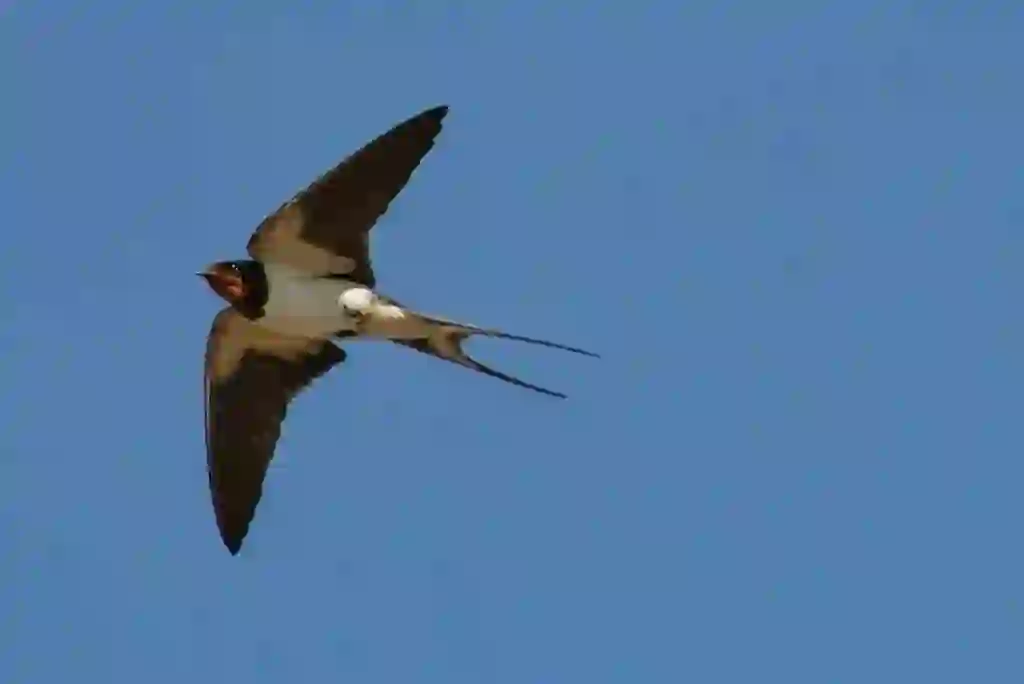
What do swallows eat?
Swallows mainly eat flying insects. Specifically, they often catch and eat small insects such as winged ants, mayflies, flies, and bees.
As for swallow chicks, they eat small insects like their parents because swallows are birds and cannot produce milk. Interestingly, adult swallows feed their chicks in order from the chick at the edge of the nest.
There is a good reason for this. Hungry chicks have a habit of moving to the edge of the nest so that they don’t lose out to other chicks. On the other hand, chicks that are full move to the center so that they are not crushed.
This is evidence that both parent swallows and chicks understand each other’s behavior.
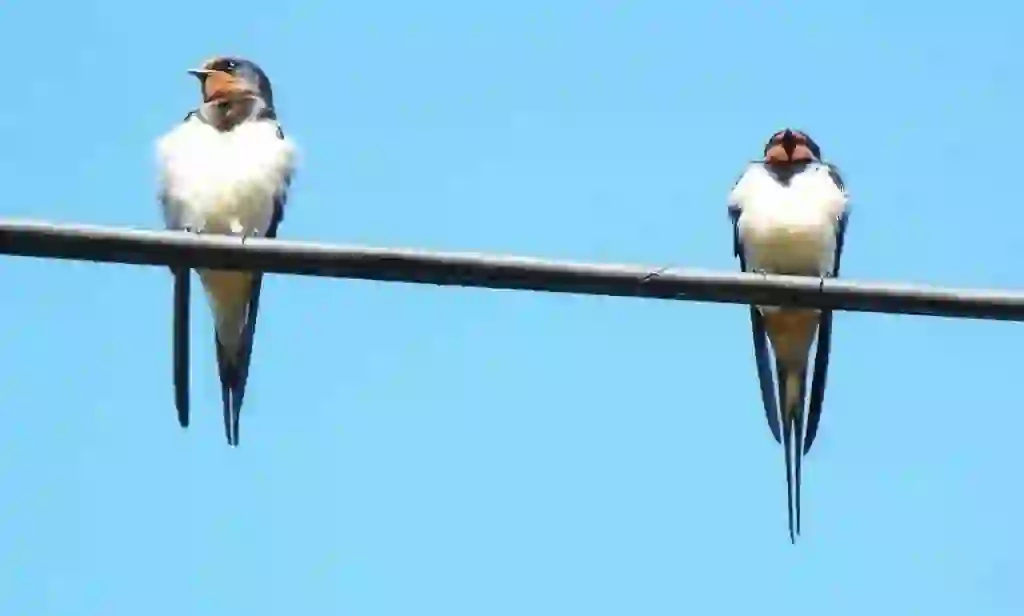
Why do swallows come to Japan in spring?
Swallows are said to mainly inhabit the northern hemisphere, but they spend their winters in relatively warm Southeast Asia and India and come to Japan in the spring after a long journey.
To come from Southeast Asia to Japan, they have to fly a long distance and may be attacked by predators along the way. Some people may think that it would be better to live in Southeast Asia all the time than to go through such a difficult journey.
It is said that the reason swallows come to Japan in the spring at the risk of their lives is because of “food”.
As I mentioned in “What do swallows eat?”, swallows mainly eat small insects. There are also insects that serve as food in Southeast Asia. However, since there are many other birds that feed mainly on insects, it is a very competitive world to find food.
In Japan, many insects come out in the spring. In addition, there are surprisingly few birds that eat insects compared to Southeast Asia, so the competition rate is much lower and the food is easier to eat.
Swallows have a habit of building nests and raising chicks in the spring, so they need a lot of food. Japan’s spring is a very suitable environment for swallows to breed, so it is worth coming all the way here even if it takes a long time.
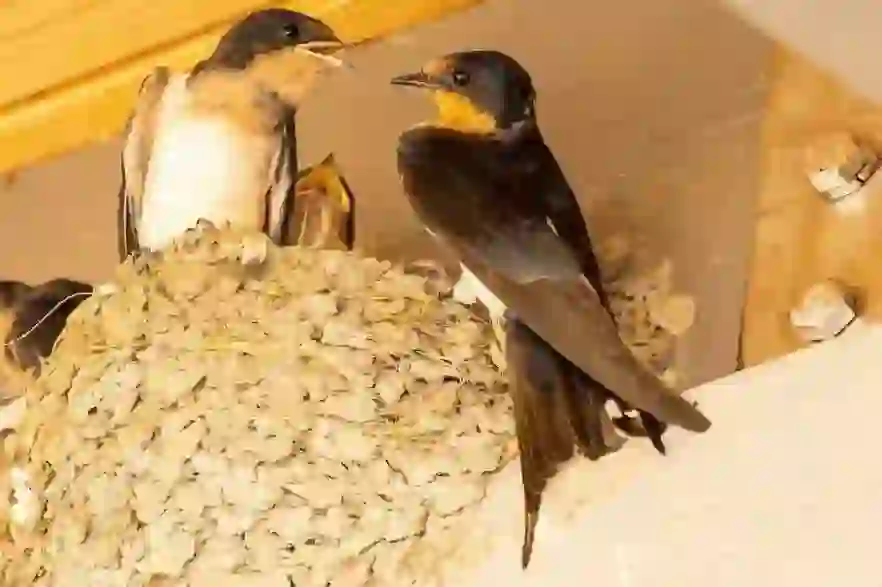
Why is the swallow said to be a symbol of happiness?
There is a Japan saying, "When swallows build a nest in a house, happiness comes." The swallow is also a bird that is said to be a symbol of happiness overseas. Building a nest brings happiness. Why did this story spread?
As I introduced in basic Information, swallows are birds that build nests under the roof and raise their chicks. Since there are many houses and buildings where humans live under the roof, it can be said that it is a place where people come and go relatively frequently.
Places where humans live are a safe place for swallows because predators such as snakes do not come very often. This is why they prefer to build nests under the roof.
So how does it relate to the symbol of happiness?
I explained earlier why swallows prefer to nest under roofs, but do swallows actually consciously choose private houses and buildings to nest themselves? It is considered to be.
Even if there is a roof, swallows do not try to build nests in houses that are likely to catch fire, and sometimes they do not build nests if there is a problem with the people living there. On the other hand, they may prefer to build nests in houses or places where many gentle people live.
It is said that good luck comes to the house where the nest is built, and for example, it is blessed with a good harvest in agriculture and is less likely to be hit by natural disasters.
Swallows only build nests in safe and secure places, so “safe” means that the people living there are kind and “secure” means that they are less likely to be hit by natural disasters. In other words, it can be said that it represents a symbol of happiness.
There is no scientific evidence for this superstition. However, the fact that old-fashioned sayings are still known today is a fact, so the mysterious intuition that swallows have may really exist.
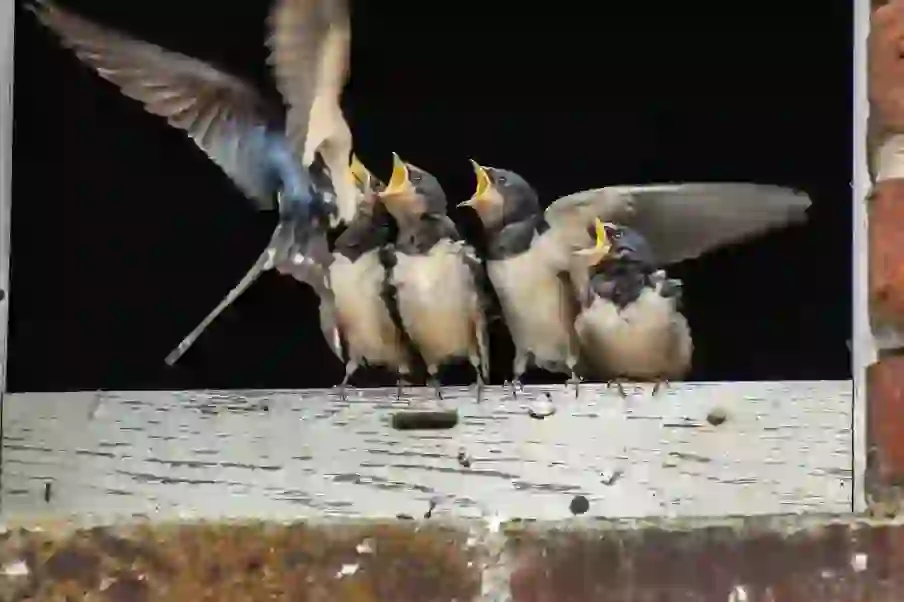
Why do swallows come back to the same nest?
Although there are individual differences, swallows may reuse a nest they built once the following year and start raising their young a second time. It's amazing that, unlike humans, they can come to Japan again from a state with no map or anything, and even reach the exact same nest. So why is this possible?
At present, not much is known about it, but it is believed that swallows rely on the position of stars and the sun to return. It is well known that the power of animals is immeasurable.
It is said that only the parent swallows return to the same nest. It is almost impossible for chicks that have left there to return to the nest made by their parents.
When reusing the nest, the male swallow flies first and checks the condition of the nest and checks for any abnormalities around it to see if he can raise his chicks in the same nest again. Then the female flies in and if there are no abnormalities, they can breed in the same nest again.
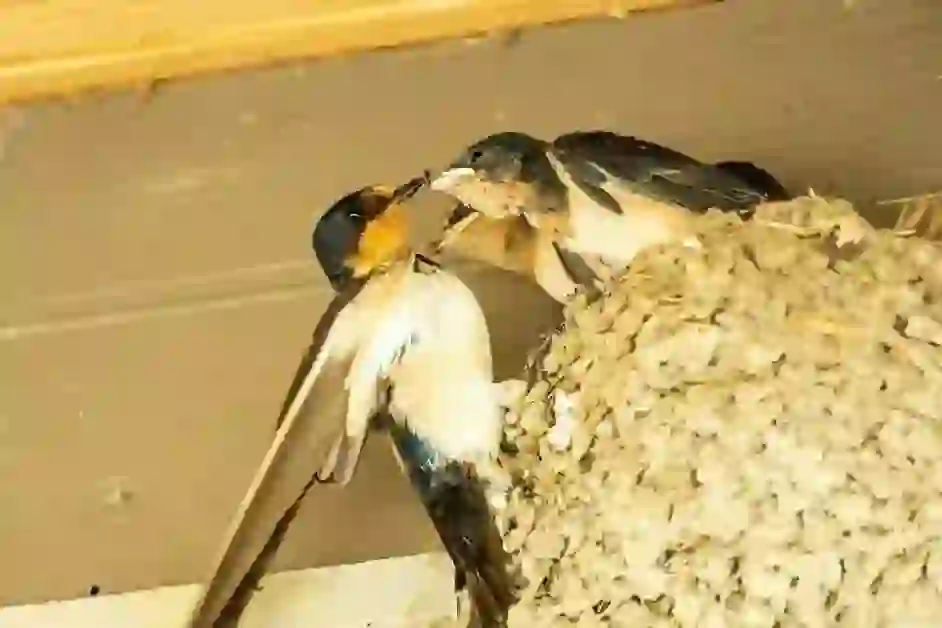
How fast can a swallow fly?
In Japan, there is a phrase "swallow return". It is true that there is an image that it can fly quite fast, but how fast can a swallow actually fly?
Swallows are said to fly at a speed of 45 km/hour. Even at their highest speed, they can fly at about 70 km/hour, which is about the same speed as a car.
Some say that they can fly at a speed of 200 km/hour, but there seems to be no clear evidence for this. This is because the swallow’s body is specialized to turn quickly, so it is thought that the horizontal flight speed is surprisingly slow.

Would you like to become a part of the 'Animalbook.jp'?
Turn your knowledge into Q&A and share it with the world. ※Publication will be activated after purchase. Let's share information together!
Swallow Type of List
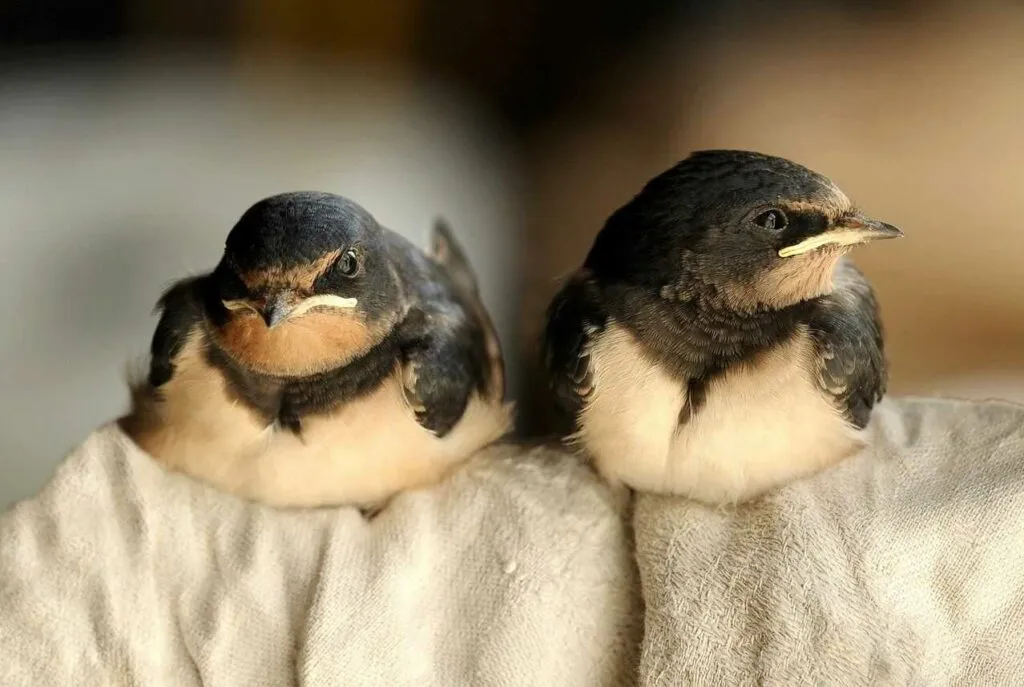
- Barn Swallow
- Asian House Martin
- Red-Rumped Swallow
- Sand Martin
- Pacific Swallow
- House Swift
Information
Congratulations! You are the first commenter!

Create Your Favorite List!
Swallow
Save the animals you love! Build your own list to quickly revisit your favorites later.

Would you like to leave a comment?
※Please note: This is for the purchase of rights to post comments within the article.
Find Your Favorites!
Our shop offers a unique and attractive selection of goods themed around various animals.
Swallow References

- ウィキペディア https://ja.wikipedia.org/wiki/ツバメ
- ツバメ観察全国ネットワーク https://sites.google.com/view/tsubame-map/top?authuser=0
- 国土交通省北海道開発局 https://www.hkd.mlit.go.jp/ob/tisui/kds/pamphlet/ikimono/pdf/ctll1r0000004trkiwatsubame.pdf
- 贈り物・マナーの情報サイト しきたり https://shikitari.net/shikitari/nijushisekki/season/3909/#outline__1
- 環境省 自然開発局 生物多様性センター http://www.biodic.go.jp/birdRinging/atlas/Hirundo_rustica/Hirundo_rustica.html
- 株式会社バイオーム https://biome.co.jp/biome_blog_072/#:~:text=ツバメ
- NHK for School https://www2.nhk.or.jp/school/movie/clip.cgi?das_id=D0005301013_00000&p=box
- 朝日新聞東京本社発行 2月12日付夕刊
- 大日本図書 http://www.dainippon-tosho.co.jp/digital_databank/rikatama/omake/grade4-1.html
Swallow Introduction of media used
出典:https://pixabay.com/videos/id-52301/

出典:https://pixabay.com/images/id-2938943/

出典:https://pixabay.com/images/id-5228995/

出典:https://pixabay.com/images/id-4871525/

出典:https://pixabay.com/images/id-5391936/

出典:https://pixabay.com/images/id-4518949/
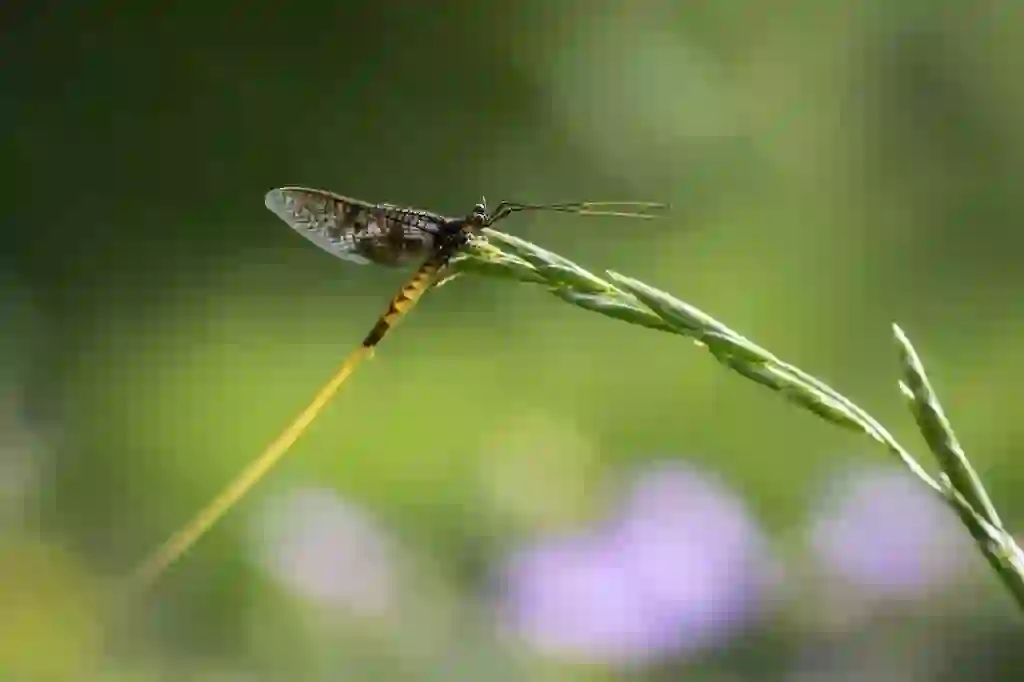
food
出典:https://pixabay.com/images/id-4811283/

出典:https://pixabay.com/images/id-5391934/
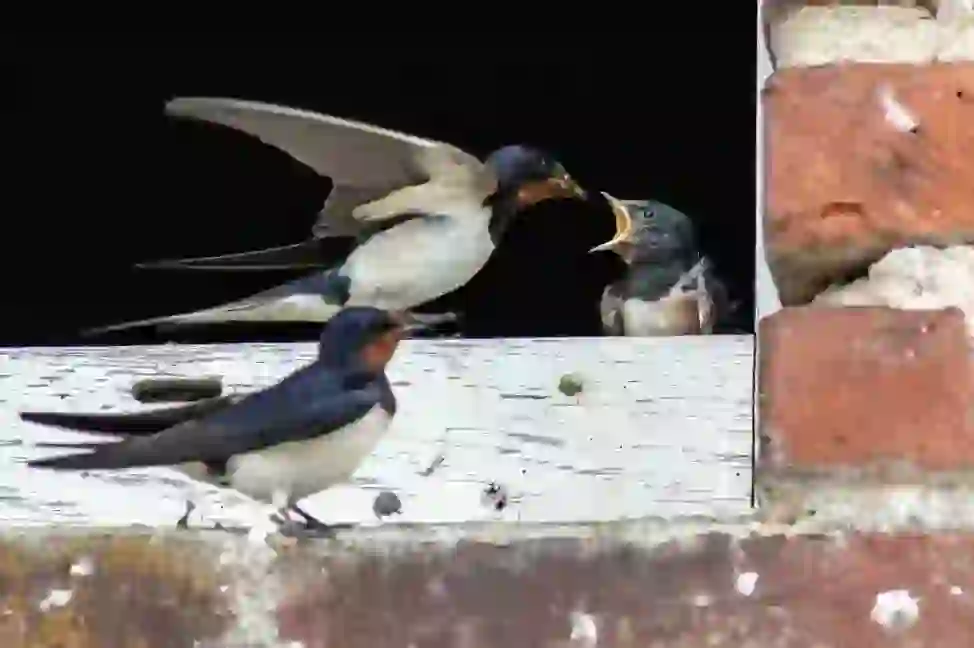
出典:https://pixabay.com/images/id-4518945/
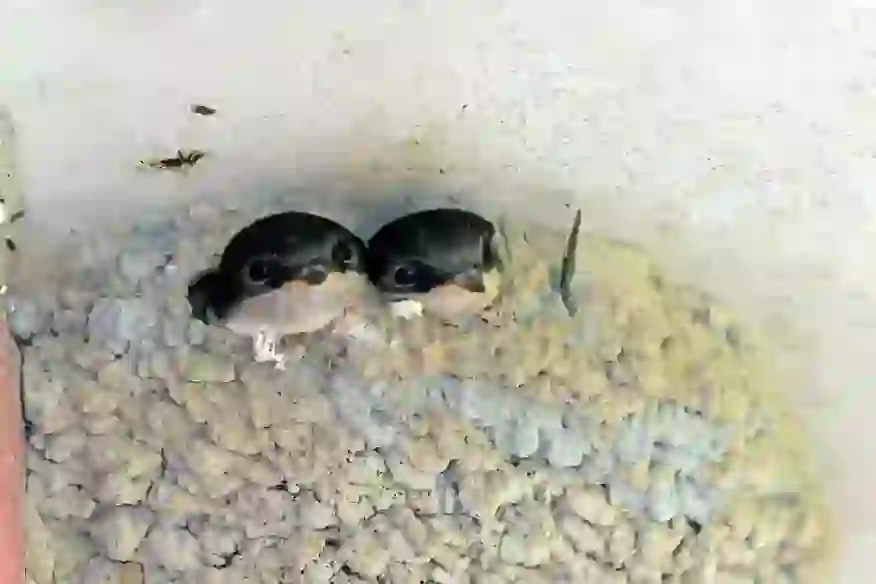
出典:https://pixabay.com/images/id-1646084/
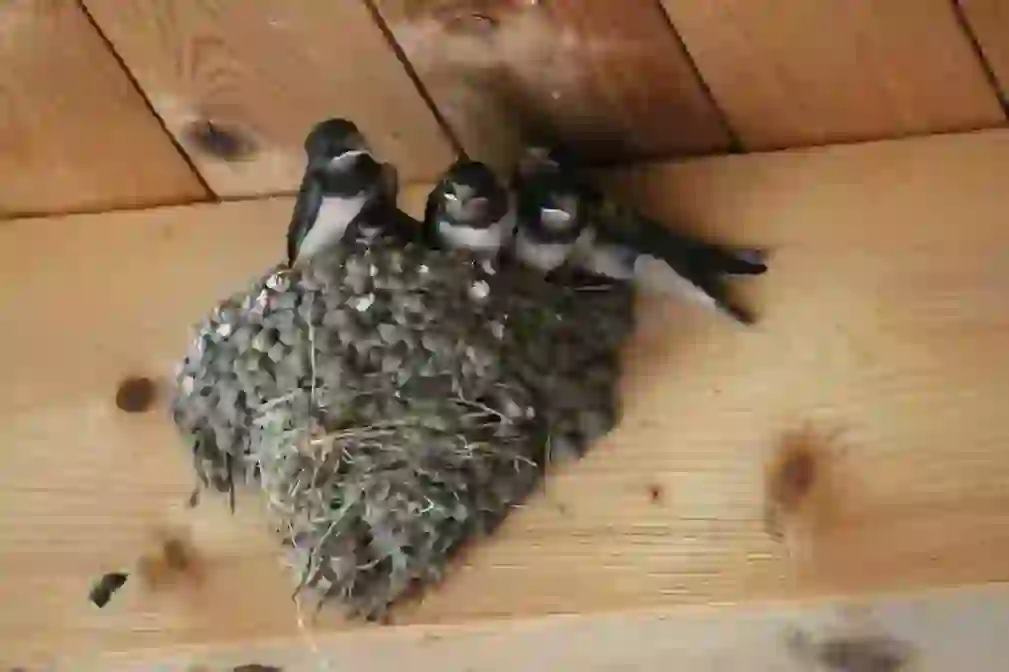
出典:https://pixabay.com/images/id-2461911/
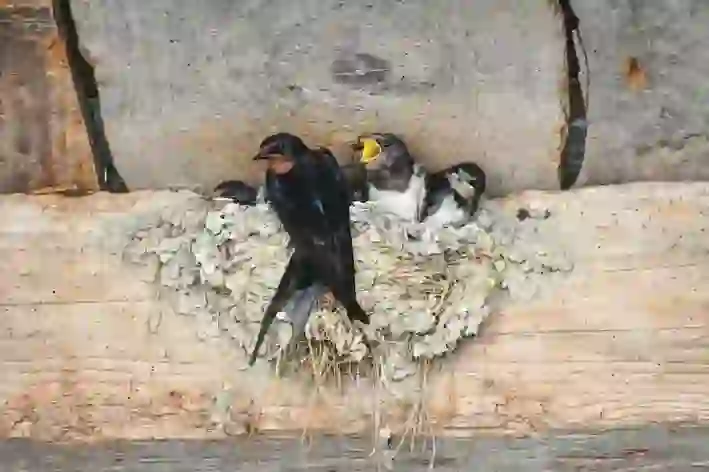
出典:https://pixabay.com/images/id-5346611/
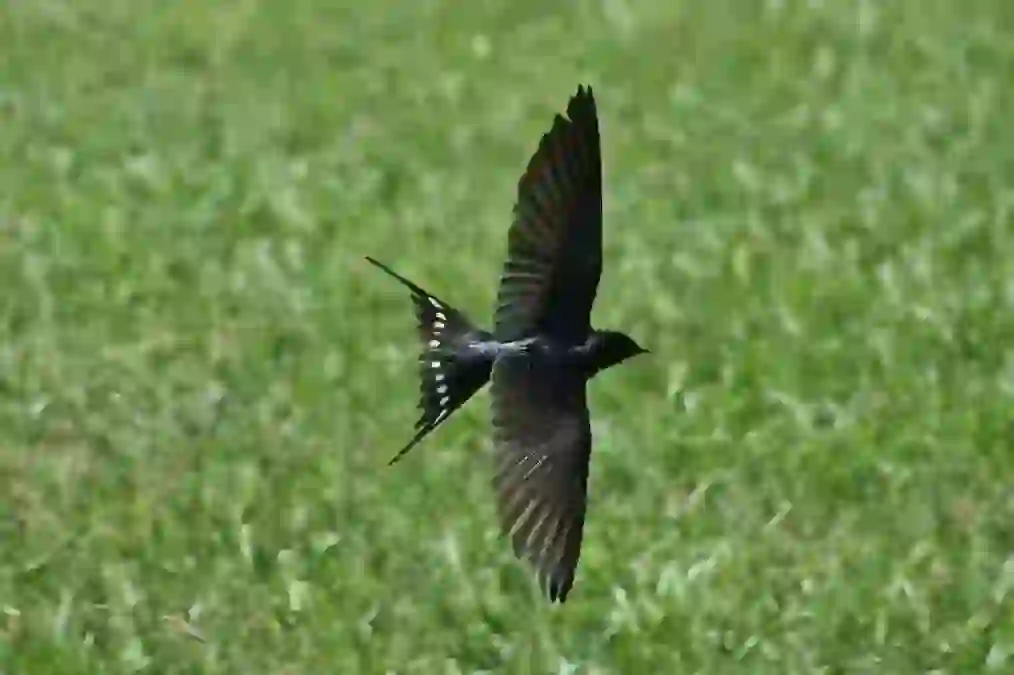
出典:https://pixabay.com/images/id-3528301/

Help Enrich Our Animalbook.jp with Your Media!
We are constantly looking to expand and enrich our Animalbook.jp with amazing photos and videos of animals. If you have any media that you'd like to share, please contribute and help us showcase the beauty and diversity of the animal kingdom. Your submissions will be credited and featured in our encyclopedia, reaching a wide audience of animal lovers.


















